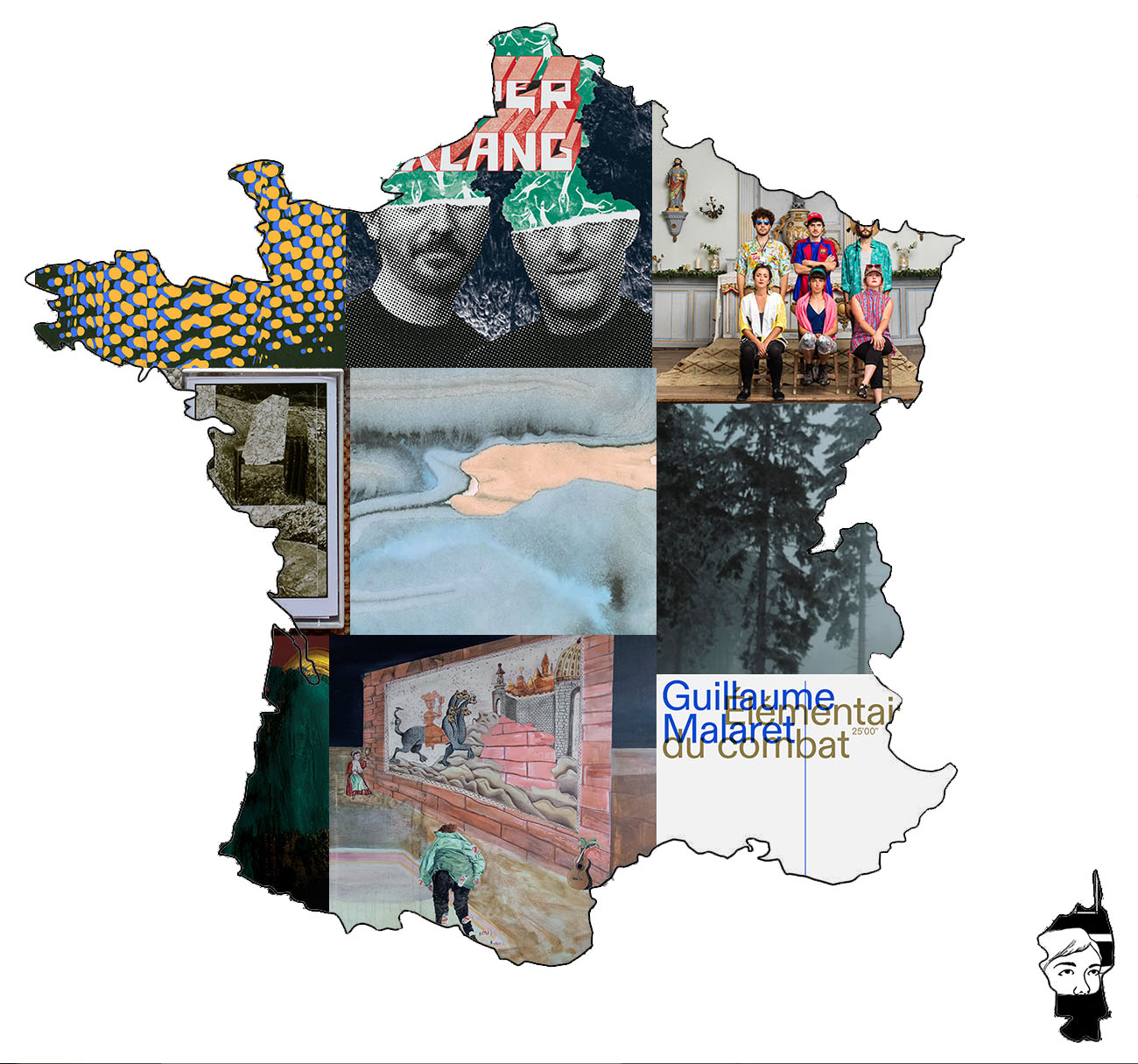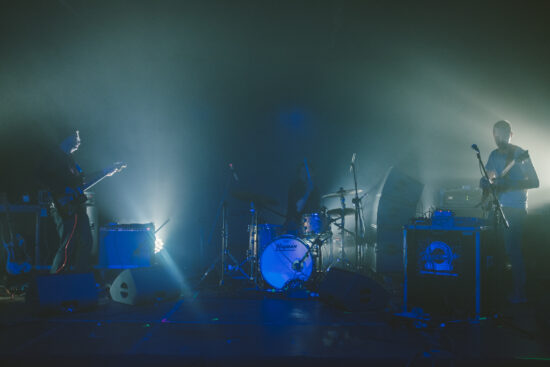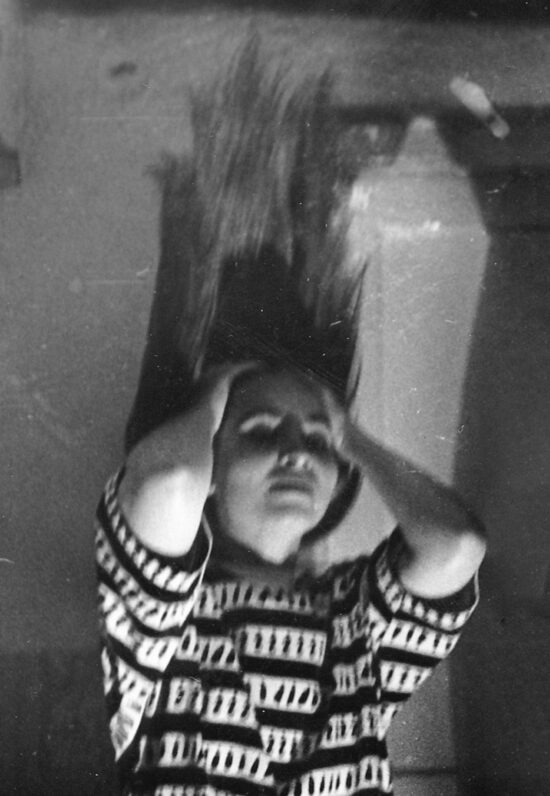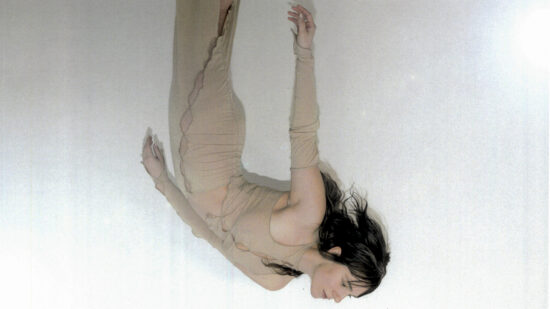Regional traditions, songs, field recordings, dark drones, and psychedelia – the French scene is in bloom.Join me for a run-through of the most interesting musical gems from France.
Translation: Aleksandra Szkudłapska
The term “French music” gives rise to a number of associations, yet I take my cue from Ghédalia Tazartès, who passed away this year. I choose music that is weird, far from obvious, rooted in the local colour, referring to tradition and the multicultural diversity of the country.
This fascination, operating at the joint of contemporary music and folk, may be heard in ”De Mòrt Viva”, the latest album by Sourdure, which is an absolute must this year. Folk inspirations are also present on Tanz Mein Herz’s Quattro – the two are my favourite records of the year – but France has given us many amazing albums in 2021. The further from Paris, the better. So what have we got here? From a contemporary use of traditional instruments, a refreshing take at field recordings, psychedelic songs and drone passages to twists and turns on the drums and free sonorist explorations. This year, the French scene is serving a whole sort of musical revelations. Below you’ll find my review of the 10 most interesting records. And a further 10 as a bonus – I couldn’t stop myself.
YANN GOURDON Yann Gourdon, La Nòvia/three:four
Yann Gourdon is a member of the France trio and one of the 12 musicians responsible for the La Nòvia collective, which explores the French music tradition in various ways. The instrumentalist’s album, titled simply with his name, consists of two sides – minimalist suites scored for the hurdy-gurdy. The simplicity of this instrument here reveals another side – a complex multi-layered sound that drills into the ear with every passing second. “Face A” is a mantric, subliminally pulsating drone, shimmering with colours that stretch out in a uniform duration. A musical monument in which the source of the sound generated is vaguely obscured, and the focus moves to resonance and its acoustic properties. The ear may be perplexed more than once; as if someone covered the lively folk music with a sonic layer, which emphasizes the nuances of the composition through ornamentation. “Face B” slows down the tempo, the sounds of the hurdy-gurdy are not so much punctuated, but rather lengthy and dignified, at times stratified. In both cases the music grows ever more dense, the hurdy-gurdy takes over the space – the Frenchman transforms the simple instrument into a sonic, vibrating tunnel of sound.
SAN SALVADOR La Grande Folie, Music Development Company/Pagans
I saw San Salvador two years ago at the Globaltica festival. Their unusual, polyphonic vocals made an impression in the space of Kolibki Park, but on La Grande Folie they sound even more powerful. Here, the sound of accompanying drums does not disappear into space, the production of the album rather gives the impression of listening to them at home, with the rumbling bass boosting the rhythm, supported by clapping. Above all, however, it is the vocals that are crucial here – a sonic labyrinth of voices created by six people. The band interprets traditional songs from Saint Salvador, a town in Occitania (where Ernest Bergez aka Sourdure also lives). These are not simple chants, but complex, progressively composed pieces that elude simple structures. Take the multi-threaded “La Liseta” or title track, which changes moods and escalates dramatic tension over twelve minutes filled with the marching sound of percussion. La Grande Folie is a celebration of playing as a group, emphasizing the potential of polyphonic singing, which on its own resembles one expanded organism – the French sextet brilliantly shows how drawn-out singing is intertwined with melodies, turning into a pulsating, catchy epic.
I N S T I T U T R I C E Cohortes, unjenesaisquoi
Everyone brought their best – one would like to say – and then they recorded an album. On Cohortes, Jean-Baptiste Geoffroy and Eric Bentz gathered percussion of various sorts: kitchen utensils, disassembled percussion pieces or such ethnic instruments as bowls and gongs. The result is an album that is not so much rhythmic as it is shining with various kinds of percussive sounds. This sonic, abstract aspect is emphasised by the opening “Cantabrica”; “Climatosceptique” is a minimalist display of bowl playing, the edgy “Cortège de tête” is a jagged metallic beat, and the twelve-minute “Werner” is a polyphony of percussion: the musicians go to great lengths to create a wall of sound. They run at breakneck speed and the rhythm is no longer important here, the most vital thing seems to be the fastest possible production of beats, coloured with drone-like passages in the background. The dramatic tension is obvious here: from powerful beats to dark drones as if straight from a horror movie. Both the speed with which the two musicians play, and the idea are impressive: the sonic, punctuated soundscape is key here, not necessarily the rhythmic cascades that often seem boring in such situations.
SUPERKLANG Superklang, Umlaut
Umlaut is a highly interesting label, stretched between Paris and Berlin, which works with contemporary composition, improvisation and traditional music. It is the co-publisher of the album Lumpeks (3/4 French), which I wrote about a year ago. Superklang are two classically trained musicians: violinist Frédéric Aurier and drummer Sylvain Lemêtre. Their latest album takes traditional instruments as its starting point – strings, the harpsichord and the Persian zarb drum, which they elevate far beyond the boundaries of folk music. The duo uses them to glue together songs with an alternative pop feel, which sometimes explode with their narrative and danceable twists (“Rage De Danse”), but also explore sonorist possibilities, lined with beats that suggest an electronic sound (“Sucre D Orge”). Superklang juggles between ideas from one extreme to the other, which is sometimes confusing and not entirely coherent, but on the plus side is the casual character of this music – lightness is intertwined here with ingenious production solutions, and the aura of folk music is wrapped in the form of repetitive motifs, which attract the ear with rhythmic allure and outlines of melodies.
ANTOINE LOYER & MÉGALODONS MALADES / BÉGAYER Sauce chien et la guitare au poireau, Le Saule
According to the inscription on the cover, Sauce chien et la guitare au poireau featured recordings made by several bands, who then decided to play together. Musically, I would place them somewhere in the depths of freak-folk, free improvisation and lyrical songwriting, which rarely ever arrive at a hit formula. This album is like a lazy afternoon that drags on casually – at times with vocals, at other times with sweet melodies, and sometimes with violent beats that wake you up from slumber. The whole oozes a light-hearted mood, but also a compelling narrative – Antoine Loyer & Mégalodons malades fill out a more melodic and folky set with an acoustic guitar in the foreground, accompanied by a rommelpot drum or an Indian-inspired shruti box boite à bourdon (drone box). Bégayer, on the other hand, is a fierce and frenzied sound, as perfectly demonstrated by the shouted “Il y a d’autres chiens rasés”, played on self-made string instruments (described as trois cordes – you can see them here), tinged with swirls on clarinet and saxophone. The whole reminds me of Animal Collective, but in 2021 this album brings a fresh and invigorating take on the afterimages of traditional music, creating a fairy-tale atmosphere.
LOUIS LAURAIN Pulses, Pipes, Patterns, Carton
I met Luis Laurain when he played with the band Lumpeks in St. John’s Church in Gdańsk. He made excellent use of the acoustics of the space in the back nave of the church, which made quite an impression on me. Back then he moved in the idiom of jazz music, but on Pulses, Pipes, Patterns his trumpet stands as far as possible from what the conventional sound of this instrument can be associated with. Laurain prepares the instrument, focuses on details (“Franzform”), sometimes samples it, looping it into the title patterns (“Rhypnotic”), he explores the resonance of the trumpet’s afterimages (“Satellites for Nawel”), or turns it into percussion (“90′”). Some of the sounds are played live, some are pre-created, they are amplified, mixed with the sounds of air, rattling jams and metallic reverberations. At times Laurain reminds me of another trumpeter, Mazen Kerbaj, who also vivisects his instrument. While Kerbaj focuses on acoustic explorations, Laurain takes the possibilities of his trumpet as the starting point and develops them by means of electrification, stretching the sound and looping ornaments. The result is an album that shines with many colours, showing the trumpet from a completely different perspective.
GUILLAUME MALARET Élémentaires du combat, Le Cabanon
Guillaume Malaret is a sound artist and co-founder of the Le Cabanon label. Élémentaires du combat is his journey into the past and the land of his childhood, whose soundscape he has recorded. However, we are not dealing here with pure field recordings, but an electrified variation thereof, which gives the sounds depth and much more meaning. The sounds of cicadas merge with the dense drone magma in “Fissures, Appel”, reminiscent of Mirt’s work, and in the second part our focus needs to be even more intense – Malaret captures the sonic details heard in the expanses of emptiness, against the hum of intercity streets. In “Brises, Soulèvement”, the Frenchman recorded the sound of air, which he processes and cuts, creating a dramatic tension of suddenly emerging sounds, which just as quickly dissolve. The layering of recordings, elements of musique concrète and quasi-sonic elements turn this multi-level story into a sonic performance that draws you in with its mysterious mood, punctuated by an ambient soundscape, with added electronic passages that do not take centre stage, but add colour to the narrative.
TRAIN FANTÔME Nous sommes dans un rêve, Cudighi/AB Records
Train Fantôme’s album is the most song-like item on the list. The duet of Lise Dua and Antoine Nouel reminds me a bit of the album Paon perdu released four years ago by another female duet, Le fruit vert, but on the other hand it brings to mind the early achievements of múm or Enchanted Hunters in their acoustic incarnation. Nous sommes dans un rêve combines folk and electronica. On the one hand, the characteristic melodic form has an old-time atmosphere, boosted by percussion and delicate acoustic guitar. On the other hand, the slightly acid synth in the background gives the music a hint of psychedelia. However, the whole has an unforced and delicate atmosphere of a fairy tale, with one foot in the past and the other appealingly contemporary. This is taken care of by the vocalists, who sing the lyrical texts in a simple manner, but still remind me of sirens tempting us with the promise of undiscovered lands. The latter is the key to reading this album: a dreamy phantasmagoria, an oneiric atmosphere in which synth passages herald a certain mystery. Or a dream, as the authors suggest in the title.
MATTHIAS PUECH A Geography of Absence, Nahal
Matthias Puech’s previous album attracted the attention with its enigmatic cover, geographically detailed in the title, but also with the music: an imaginary sonosphere of the Alps. His latest, third solo album, also features location in the title, but it now seems more enigmatic. It’s not clear where we are, perhaps it’s the soundtrack of emptiness? Puech, a computer scientist and member of the Groupe de Recherches Musicales, combines synthetic sounds and field recordings. To a certain extent, we are close to the aforementioned Malaret, but while there everything seems more united and homogeneous, here you can clearly hear the individual elements of this sound puzzle. If “Hollow” is still a dark drone opening with brisk dramatic tension, then later on the composer creates noise in the sense of combining the finest elements into a sonic magma. A great example of this is “Tunnel Vision”, a piece based on animal bells in the mountains, which are arranged in a dense wall of sound. In “A Faint Beacon” we are tête-à-tête with the mystery of birds in the middle of the woods, lightly boosted by electrification. It’s full of compelling puzzles with a truly cinematic narrative.
LES CONFÉRENCES BUNKER Masamun, Tanzprocez
The strangest release of the whole set. Les Conférences Bunker have created a bizarre ritual on the basis of modified percussion and dense layers of electronics and noise. The dynamics of the tracks may shock at first: from delicate beats and sound smouldering in the distance to spasmodic patterns of noise that grow ever more dense. Sometimes it’s closer to sonorist improvisation, at other times to motifs resembling the works of Lightning Bolt (“Girouette Amulette”) or Clipping (“Barbara Goaoulde”), especially when the presence of foot and snare drums accompanied by electronic passages is emphasised (“Rémus Et Romulus”). The whole cassette follows the idea of deconstructing music – from acid starts through stormy breaks, balancing between noise and silence, acoustic fragments and samplodelics. But also fragmentary vocals, like in the spaced out, speeding ragga in “Tapas Vandal”. Masamun is a mad musical collage, playing with form, searching for mistakes, fixing them, making music on a living organism, where everything seems to be open to coincidences and surprises until the end. Such sonic twists and turns are a good exercise in breaking with the routine.
Prochaine 10
- EMMANUELLE PARRENIN / DETLEF WEINRICH Jours De Grève, Versatile Records
- ABACAXI Mainstream desire, Carton
- RIEN VIRGULE La consolation des violettes, Murailles Music
- DORMINN Dorminn, WV Sorcerer Production
- BRAVO TOUNKY Flash Détente, ABrecords
- LES PYTHONS DE LA FOURNAISE L’Orchestre Du Piton, Catapulte
- SOIA, JULIEN SÉNÉLAS, JÉRÔME VASSEREAU In C Pour 11 Oscillateurs Et 53 Formes, Unjenesaisquoi
- UNITED COLOR OF BLACK METAL Synchronicités, Kythibong
- MAGICIEN WINDOWS Du désespoir plein la trompette, Le Syndicat Des Scorpions
- JOHANN MAZÉ & JIHEM Rita Autre Brousse, Da ! Heard It Records




